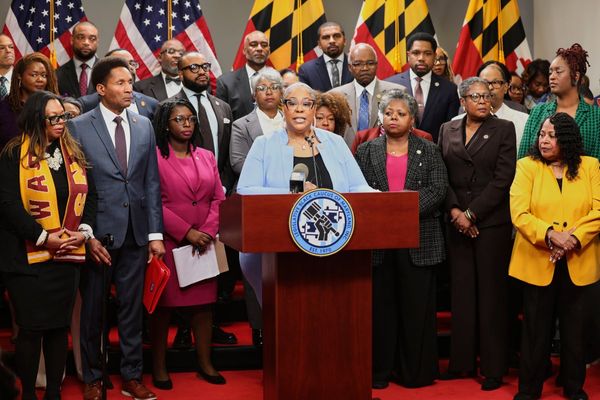Rotting and ruined crops and eroded riverbeds have left deep scars on farmland along the Queensland-New South Wales border rivers.
Farmers are beginning to realise the extent of the damage as floodwaters start to recede in some areas.
"The impact of these recent floods is just heartbreaking and diabolical," Queensland farming charity Drought Angels' Natasha Johnston said.
Successive natural disasters
For the second time this year, the Dumaresq River broke its banks last week, inundating farmland near Texas, 300 kilometres south-west of Brisbane.
"Up to 100 per cent of barley crops have been lost in the district and cotton has also been 30 per cent damaged, according to reports from friends," Texas farmer Greg Finlay said.
Farmers were still recovering from flooding in March that also destroyed entire crops.
These disasters follow a record drought culminating in the driest years on record in 2018 and 2019.
"A lot of my farming friends and business owners are just feeling numb from yet another natural disaster," Mr Finlay said.
These crops represented the first stable cash flow in several years for some.
Texas farmer Adam Cleeve lost his entire barley crop just days from harvest.
"Basically, the crop is ruined," Mr Cleeve said.
Mr Cleeve said the floods might have caused up to $100,000 in damage on his properties.
"We've had so many losses that you sort of get used to it after a while," he said.
Reason for hope
The critical difference between the recent flood and the March event is the stage of the crops.
While many winter crops ready for harvest have been irreparably damaged, some recently planted crops may survive if wet weather holds off.
The deluge has also replenished water resources in regions still recovering from drought.
Mr Finlay said he also took solace in the resilience and support of the local community.
"Everyone just knows they'll just get in and make this work," he said.
"We'll get through this, we always do."
Industry groups say many rural properties remain cut off, so the total cost of flood damage to crops and properties will not be known until wet weather subsides and waters recede.
A helping hand
The Queensland and Federal Governments have extended disaster assistance to flood-affected primary producers in central, southern and western Queensland.
Financial assistance is through the jointly funded Disaster Recovery Funding Arrangements in the form of low-interest loans.
"[This] will provide concessional loans up to $250,000 to primary producers and essential working capital loans of up to $100,000 to continue on-farm operations," Federal Minister for Emergency Management and National Recovery and Resilience, Bridget McKenzie said.
Local charities BlazeAid and Drought Angels are also helping.
Drought Angels has delivered emergency food hampers by road and even helicopter to families in hardship.
The charity is also sending out Christmas presents ahead of the festive season.
"I've actually spoken to a couple of families in the last week who have said they are no longer able to afford Christmas presents because of this flood. They can't afford Christmas presents for their kids," Ms Johnston said.
"The spirit of Christmas isn't going to be broken for them."







